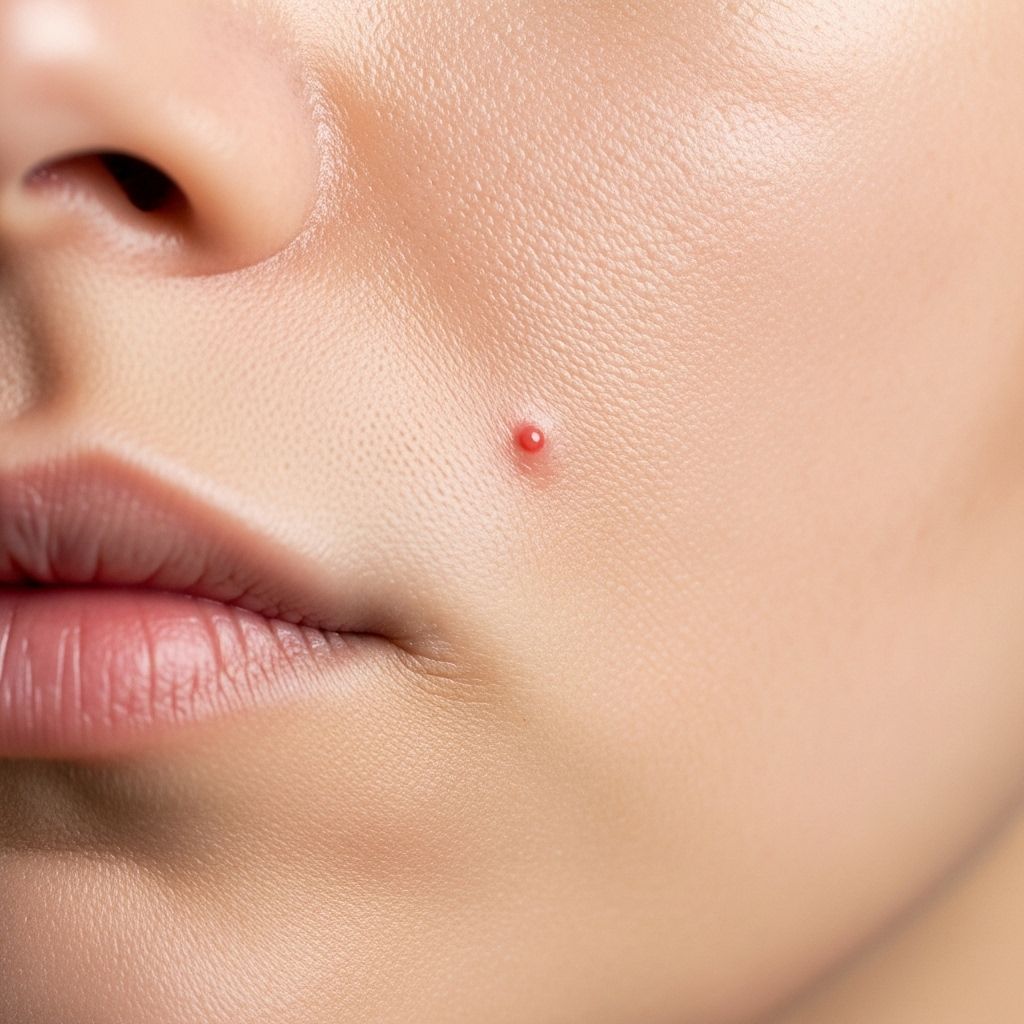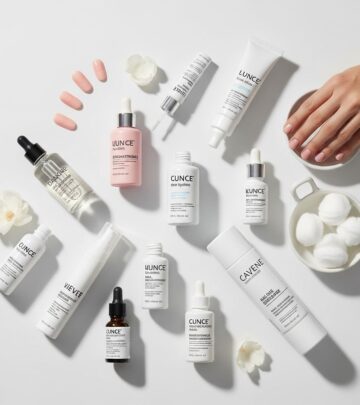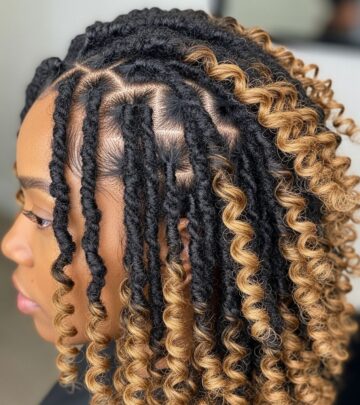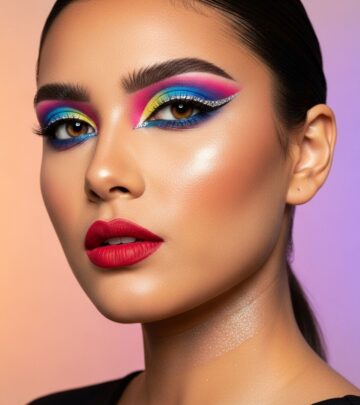Why Do Pimples Keep Coming Back in the Same Spot? Expert Guide
Uncover the hidden reasons and lasting treatments for recurring pimples that just won’t quit.

Why Does My Pimple Come Back in the Same Spot? An In-Depth Look at Recurring Acne
Struggling with a pimple that keeps reappearing in the exact same place can be both confusing and discouraging. Even after what looks like a successful healing, a familiar bump returns, sometimes bigger or more stubborn than before. This phenomenon is more common than you might think, and understanding the reasons behind it is crucial for effective treatment and prevention.
Table of Contents
- Why Do I Get Acne in the Same Spot?
- The Science Behind Recurring Pimples
- Where You Get It Matters: What Your Acne’s Location Says
- Effective Treatment & Prevention Strategies
- How to Handle Stubborn or Cystic Spots
- The Role of Lifestyle and Habits
- Optimizing Your Skincare Routine
- Frequently Asked Questions
Why Do I Get Acne in the Same Spot?
Recurring pimples in one location are typically due to a combination of pore blockages, oil production, bacteria, and even previous skin trauma. Some key contributors include:
- Oily zones: Areas like the forehead, chin, and nose (the T-zone) produce more sebum, making them more prone to repeated blockages and flare-ups.
- Hormonal changes: Fluctuations, especially around periods, pregnancy, or puberty, stimulate sebaceous glands and can provoke breakouts in consistent places.
- Habits and hygiene: Regularly touching your face, using unclean items like phones and pillowcases, or improper cleansing introduces or spreads bacteria, increasing the odds of repeated irritation in the same area.
- Genetics: Some people are simply more predisposed to develop acne, and these patterns can be inherited.
- popping pimples: Squeezing or picking without removing the blockage entirely can leave debris behind, easily causing the same pimple or another one in close proximity to come back.
The Science Behind Recurring Pimples
Understanding the journey of a pimple helps explain why recurrence is so common. Pimples form when hair follicles become clogged with a mixture of dead skin cells, oil (sebum), and bacteria. If not thoroughly cleared, blockages in the same pore can re-inflate, leading to the appearance of a persistent blemish. Often, what you see as new is just the same pimple that never fully healed, or another forming very close by due to lingering inflammation.
A few scientific reasons contribute to why these blockages reform in the same location:
- Resilient Bacteria: Certain strains of bacteria can colonize pores, lying dormant until optimal conditions (like excess oil) return.
- Micro-scarring: Picking or popping can damage pore walls, making them more susceptible to re-blocking.
- Hormonal Patterns: Hormonal surges activate oil glands in very specific areas, especially the chin, jawline, and cheeks, repeating with each cycle.
Where You Get It Matters: What Your Acne’s Location Says
Dermatologists note that the placement of repeated pimples can reveal much about their possible triggers. Here’s a location-by-location breakdown:
| Location | Common Triggers | Prevention/Treatment Tips |
|---|---|---|
| Hairline | Pomade acne from hair products | Switch to non-comedogenic products; shield face during application |
| Forehead/Nose (T-zone) | Excess oil, stress, lack of sleep | Oil-control cleansers, stress management, regular exfoliation |
| Cheeks | Dirty pillowcases, phones, touching face | Change linens weekly, sanitize phone, hands-off policy |
| Chin/Jawline | Hormonal fluctuations | Track cycles, consider consulting for hormonal treatments |
Sometimes, certain body areas, such as the back or chest, suffer from recurring breakouts due to sweat, tight clothing, and friction. Clean, loose-fitting clothing and immediate showers post-exercise are beneficial here.
Effective Treatment & Prevention Strategies
Breaking the cycle of recurring acne requires a combination of consistent routines and targeted treatments. Some evidence-backed steps include:
- Regular Cleansing: Cleanse skin gently but thoroughly, especially after sweating. Use a cleanser suited to your skin’s oil levels.
- Moisturize Wisely: Even oily skin needs hydration. Skipping moisturizer can actually prompt excess oil production.
- Topical Treatments: Ingredients like salicylic acid, benzoyl peroxide, and retinoids help clear pores, combat bacteria, and speed up healing.
- Don’t Pick: Avoid squeezing or picking at spots, as incomplete removal of blockages will guarantee recurrences and potentially worsen scarring.
- Sun Protection: Some acne medications increase sun sensitivity, but also, sun damage can worsen inflammation. Use non-comedogenic sunscreen daily.
When to Seek Expert Help
- If pimples keep coming back in the exact same spot over several months
- If you notice painful, deep cysts or nodules
- If over-the-counter (OTC) treatments fail to work after several weeks
- If repeated pimples are leaving scars or pigmentation marks
Dermatologists may prescribe prescription-strength topicals, oral medications, hormone therapy, or professional procedures for resistant cases.
How to Handle Stubborn or Cystic Spots
Cystic acne—the kind that feels deep, sore, and never seems to reach the surface—often forms in the same location because of lingering debris or chronic hormonal triggers. This type usually won’t respond to surface treatments alone.
- Intralesional Cortisone Injections: For deep cysts, in-office steroid shots can rapidly reduce inflammation and prevent recurrence.
- Oral Treatments: Hormonal therapy (like birth control or anti-androgens) or sometimes antibiotics are necessary for chronic or severe cases.
- Patience with Healing: Cysts can take weeks to resolve. Attempting to pop or squeeze will prolong inflammation and likely cause scarring.
It’s crucial not to use harsh treatments that inflame the area further. For cystic spots:
- Apply warm compresses to reduce pain and encourage drainage.
- Consult a dermatologist for appropriate anti-inflammatory and antimicrobial therapy.
The Role of Lifestyle and Habits
Certain daily habits set the stage for repeated breakouts in familiar places:
- Face Touching: Hands transfer oils and bacteria. Be mindful of unconscious facial contact.
- Phone Hygiene: Clean screens regularly with alcohol wipes.
- Pillowcases, Towels, and Hats: Wash them at least once a week. Change pillowcases twice weekly if you’re very acne-prone.
- Makeup & Hair Products: Use only non-comedogenic formulas. Remove makeup before bed, and apply hair products away from the face.
- Diet & Hormones: Some evidence links high-glycemic diets, dairy, and hormonal imbalances to persistent breakouts. Track your habits and trigger foods, and consult your healthcare provider for hormonal evaluation if needed.
Optimizing Your Skincare Routine
An effective acne-control skincare routine includes:
- Twice-daily gentle cleansing, especially after sweating
- Exfoliation 2–3 times per week with ingredients like salicylic acid
- Consistent use of non-comedogenic moisturizers and sunscreens
- Spot treatment for flare-ups with benzoyl peroxide or sulfur-based products
- Weekly checks for expired or contaminated products
Frequently Asked Questions (FAQs)
Q: Does squeezing my pimple cause it to come back in the same place?
A: Yes. Squeezing or picking at a pimple can leave behind some blockage or even drive bacteria deeper, increasing the risk of recurrence and potential scarring.
Q: Why do I always get pimples on my chin and jawline around my period?
A: This is usually due to hormonal fluctuations activating the oil glands in that region, making those areas particularly prone to cyclical breakouts.
Q: Can my pillowcase or phone be responsible for recurring cheek acne?
A: Absolutely. Items that regularly touch your skin, especially porous fabrics and frequently handled electronics, can harbor bacteria and oil that clog pores in the same area repeatedly.
Q: Are deep pimples that keep coming back always cystic acne?
A: Not always, but recurring, painful, deep bumps are often cystic. These require targeted dermatological treatment and shouldn’t be picked at to avoid scarring.
Q: Will over-washing help my recurring acne?
A: No. While cleansing is important, over-washing can strip protective oils, causing more irritation and even increased oil production. Use a gentle cleanser and always moisturize afterward.
Q: Should I change my skincare products if I keep getting breakouts in the same place?
A: If your routine includes pore-clogging (comedogenic) products or irritants, switching to non-comedogenic, gentle formulas is essential. Review your products regularly and patch-test new items.
Key Takeaways
- Recurring acne usually signals incomplete pore clearing, persistent inflammation, or ongoing triggers like hormones, bacteria, or irritated skin.
- Location-specific outbreaks offer clues to their causes, such as hairline acne from product buildup, or cheek/chin acne from hormones or dirty objects.
- Consistent cleansing, proper hydration, and lifestyle modifications are foundational to breaking the recurrence cycle.
- If over-the-counter strategies fail, professional dermatological guidance is highly recommended to prevent permanent scarring and find a long-term solution.
References
- https://www.proactiv.com/blog/acne-causes/why-do-i-keep-getting-acne-in-the-same-spot
- https://teamdermatologymd.com/blog/why-you-keep-getting-pimples-in-the-same-spot/
- https://theskinclinicaz.com/why-do-i-keep-having-acne-in-the-same-spot/
- https://my.clevelandclinic.org/health/diseases/21737-cystic-acne
- https://www.aad.org/public/diseases/acne/really-acne/stubborn-acne
- https://www.skincare.com/skin-concerns/acne/pimple-returning-in-same-spot
- https://my.clevelandclinic.org/health/diseases/22468-pimples
Read full bio of Sneha Tete












